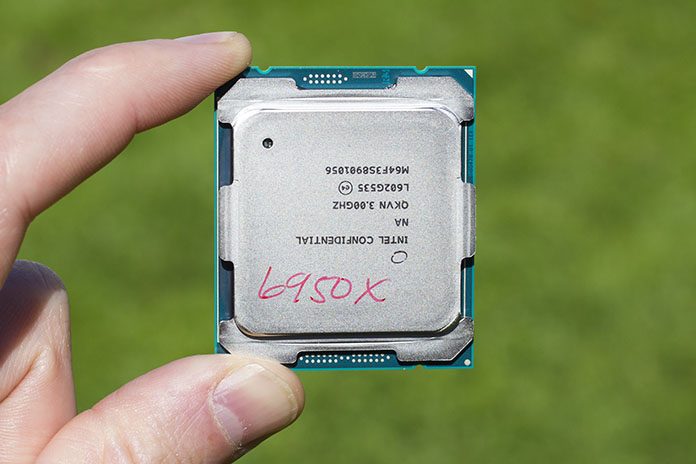Memory frequency expectations
Broadwell-E features official Intel support for memory speeds up to DDR4-2400. Anything with a higher frequency – even based on an XMP rating – is classified as overclocking. In comparison, Haswell-E’s official support was limited to DDR4-2133. Gen-on-gen improvements such as these are par for the course due to architectural improvements on the processor that lend to lower power consumption and improved signal margins.
Usually, stock frequency improvements translate to increased headroom for overclocking. In that regard, Broadwell-E does not disappoint. The architecture is capable of higher memory frequencies than Haswell-E, but its real strengths lie in how well it handles high memory densities. We’ve seen examples running 128GB of memory at over DDR4-3400. There are obvious trade-offs with that amount of memory at such speeds, but it is impressive to see nevertheless.
From a memory sub-timing point of view, the sweet spot for performance at reasonable voltages lands around DD4-3200. We experienced this first-hand when we visited our R&D dept in Taiwan recently and managed to get our mitts on an exceptional 32GB set of Samsung-based DIMMs capable of running at DDR4-3200 with all important memory sub-timings set to the minimum internal spacing allowed by the chipset. For those of us that have a reasonable grasp of what memory timings do, this is special. Such feats were not possible on Haswell-E.
Of course, the kit we are referring to was rated at DDR4-3200. We thought we’d make this point in case you think purchasing a slower Samsung-based memory kit will allow overclocking to these speeds at low voltages. It won’t. Memory vendors bin their kits quite aggressively, so the chances of finding nuggets in a pile of retail rocks are unlikely. If you want a good kit, you’ll have to pay for it.
We’ll also reiterate that your system budget is best spent on GPUs, storage, and CPUs in comparison to memory. We advise discerning minds to invest in memory kits rated between DDR4-2400 and DDR4-3000, rather than higher speeds, because the cost-to-performance-gain-ratio is horrific beyond that range.
Broadwell-E’s prowess at handling high memory densities aside, if you’re a plug-and-play fanatic, do not combine multiple memory kits to make up a higher density. Purchase a single memory kit rated at the density and timings you wish to run. Combining memory kits – even if they’re same make/model – can lead to instability, and combined kits may not be capable of achieving the rated timings/frequency at the specified voltage of a single memory kit. While there are exceptions to that rule, manual tuning is often required to get the memory stable. Manually tuning memory is no trivial task, and it’s made more difficult because there is no official support for such configurations from memory or motherboard vendors. Sound advice for plug-and-play fanatics is to purchase a memory kit that is rated at officially supported speeds (DDR4-2400 or slower) and not be fooled into purchasing high-frequency XMP modules. High-speed XMP configurations may need manual tuning on a case-by-case basis. This advice isn’t just for Broadwell-E, it’s for all platforms.
We haven’t seen any adverse effects related to memory stability when the CPU is overclocked. For the most part, CPU core frequency limits aren’t affected by memory speeds up to DDR4-3200. There may be some implications if the Uncore, memory, and CPU are all overclocked – one usually has to trade Uncore frequency for memory frequency. In such instances, we’d advise running a lower Uncore frequency unless the applications you are running are cache-intensive.
The System Agent (VCCSA) and IO (VCCIO) rails are the primary rails for memory controller overclocking. If tuning manually, increase or decrease voltages gradually – applying too much voltage can be just as unstable as not providing enough. The highest voltage we use when tuning these rails manually is 1.30V. For memory speeds below DDR4-3000, voltages under 1.20V for both should suffice unless the memory controller on your CPU is one of the weaker samples, or the memory modules have limited stability margins at the rated timings.

